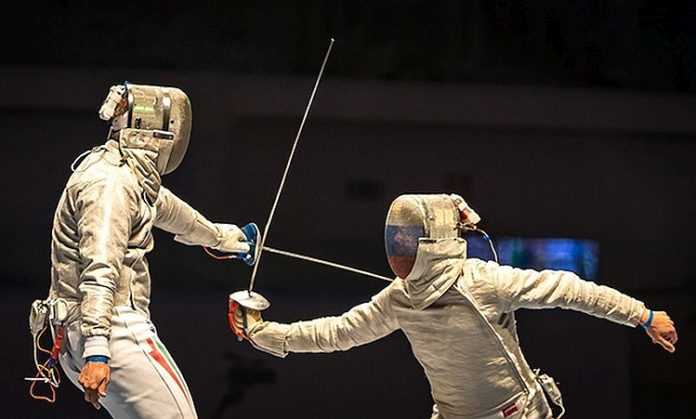There was a collective eyebrow-raising in the world of Olympic sports when the Association of Summer Olympic International Federations (ASOIF) released its “Future of Global Sport” report on 28 February.
In its 46 pages, the collective wisdom of a 17-member, blue-ribbon panel of sports experts – from Olympic and non-Olympic backgrounds – was shared with considerable concern for the future.
There were 10 recommendations for International Federations to look to for the future, with five each in the categories of Governance and Entrepreneurialism, and much of the reporting has focused on those.
But the absolute key to the success of any federation – and the sport it governs – was stated on page 38 in a section of the “Future of sponsorship”:
The biggest challenge for IFs in the next 10 to 20 years is to attract new people to participate in and consume their sports.
That is the entire issue for sports and federations and, in truth, nothing else matters. The rest, as a wise man once said, is commentary.
There are positive things federations can do to promote themselves, such as producing better events, with better television presentation values, and using good governance and working against cheating to keep from losing faith with fans.
But the fan base – called “audience” in marketing-speak – is the key issue. And on the size of a sport’s fan base is whether it will live or die.
The report goes into some depth on this, and of course no individual federation is singled out in any of the many charts. But there are warning signals:
“[A]round half the IFs may be said to have a significant reliance on IOC revenues, that is more than 25% of their revenues coming from their Games revenue share [of television rights sales] in any four-year cycle, with more than a third relying on Games revenue share for over 45% of their income.
“While this reliance is steadily decreasing overall (from an approximate average dependency of 45% at the time of the Sydney 2000 Games, to about 32% following those of Rio 2016), the bottom third would be ill-advised to let this situation linger.”
No kidding.
But the truth is that these sports, which depend so heavily on IOC money, are ripe for removal from the Games and possibly disappearing from the international stage. Weightlifting, for example, is essentially on IOC probation regarding the 2024 Paris Games because of the enormous number of doping positives in sport. The head of the International Weightlifting Federation, Tamas Ajan (HUN) has noted the danger to the sport if it were to be removed from the Olympic program, saying of the doping problem in late 2018, “ I basically think the sport, or a very big majority, understand that the sport cannot exist in the future if we are not very strict and we don’t do everything to make it clean.”
Who else is in trouble? The federations distribute their Olympic revenue from the IOC according to an agreed-on tier system which is based on which sports got the most viewers, on-site attendees, media coverage and so on. We have listed this previously, but it tell you a lot about the relative profile of the sports; the current ASOIF distribution scheme:
● Tier 1: Athletics, Aquatics, Gymnastics
● Tier 2: Basketball, Cycling, Football, Tennis, Volleyball
● Tier 3: Archery, Badminton, Boxing, Judo, Rowing, Shooting, Table Tennis, Weightlifting
● Tier 4: Canoeing, Equestrian, Fencing, Handball, Hockey, Sailing, Taekwondo, Triathlon, Wrestling
● Tier 5: Modern Pentathlon, plus Golf and Rugby as first-time sports in 2016.
The IOC is currently examining the program for the 2024 Paris Games and is expected to finalize the sports and events in 2020. It will be fascinating to see what changes will be made, and what the IOC does about two sports it continues to have doubts about: boxing and weightlifting.
The Future of Global Sport report also makes a significant point about the differences in the European and American models of sport. In Europe, the pyramidal structure starts with the participants at the bottom and layering clubs, national federations, IFs and the IOC at the top. The U.S. model is quite different, featuring closed professional leagues that are separate and apart from the Olympic sports and their National Governing Bodies and the high school and college systems that end up sending a small number of their athletes to play for pay.
Which is the future? The report notes that federations must become more business-like, because “Where IFs and [National Federations] do not assert themselves, business may well sweep in and capitalise on missed opportunities, or the public sector may feel the need to make up for ineffective governance.”
That’s more the U.S. model, which is based in the private sector, but the report sees that public entities could engage privately-organized entities to create participation opportunities. In the U.S., the models would be Little League Baseball, Pee Wee and Pop Warner Football and similar programs at the grass-roots levels, which are not directed by any national federation.
There is also the possibility of promoter-based elite events, of which the report notes that “There are recent examples of sports events with growth potential organised independently of the IF. If such an event succeeds, an IF could lose control of a major global competition in a matter of years. … A tall order, but not impossible.” Think of ESPN’s X Games as a success in this area.
The report also notes that the “vaster populations” of Asian nations such as China, India and Indonesia are so important in the future that federations “must accelerate their focus on developing effective strategies toward the regions of the world to which economic power continues to shift.”
These are all important, but the report once again states the key objective on page 23, and any sport which loses sight of this will be doomed:
“At its core, this means having a product that tells a story, is entertaining enough to capture and hold fans’ attention and imagination, and that the barrier to understanding what is unfolding in front of the spectator is as low as possible in order to deliver growth.”
Are you listening, Sport Climbing and Wrestling, among others?
The report was a fascinating read in that ASOIF provided a call-to-arms for its members that their futures are hardly assured. There are many more excellent, small suggestions included, but the core question is well framed: how many people care about your sport?
The IOC – among others – is watching, and counting.
Rich Perelman
Editor



























